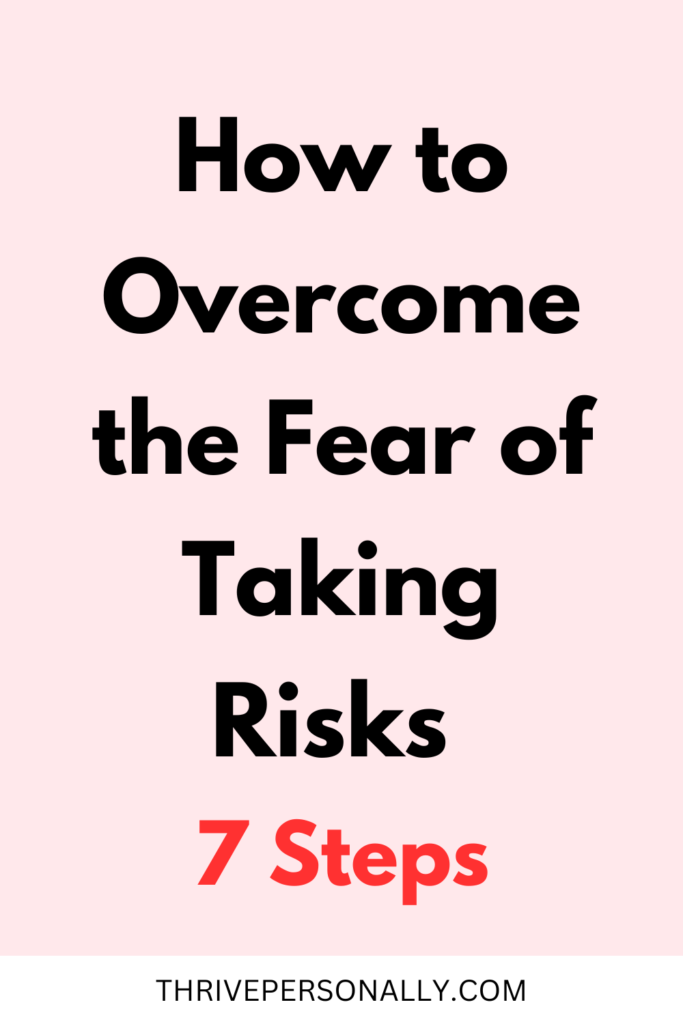Fear of taking risks is a universal experience many individuals face at various points in their lives. This fear can stem from a variety of sources, including past experiences, societal pressures, and even personal insecurities.
In essence, when you think about stepping outside your comfort zone, this fear can manifest as an instinctual response aimed at protecting you from perceived dangers. It is important to recognize that experiencing fear is a natural emotion that serves a significant purpose; it can alert you to potential threats and encourage careful consideration of your choices. However, it can also hinder your ability to explore new opportunities and embrace transformative experiences.
When you let fear dictate your decisions, you may miss out on the chance to grow or gain new skills. Many people encounter moments in their lives where the fear of taking risks holds them back from pursuing a new job, starting a relationship, or even trying a new hobby.
How to Overcome the Fear of Taking Risks in Life
1. Identifying Your Fears
To effectively overcome the fear of taking risks in life, the first essential step is to recognize and identify the specific fears holding you back. Take a moment to reflect on situations that cause you anxiety. For instance, think about trying something new at school, meeting new people, or making significant life decisions. By pinpointing these scenarios, you can better understand what triggers your apprehension.
Begin by making a list of situations that make you feel uncomfortable. Perhaps the thought of giving a presentation in class makes you anxious, or maybe you feel nervous when asked to socialize at events. It is useful to categorize these fears into groups, such as social fears, academic fears, or personal development fears. This categorization allows you to see patterns in your fear responses and helps you realize that you are not alone in experiencing these feelings.
Another practical exercise is to visualize each fear. Imagine the worst-case scenario and consider what could happen if you were to embrace the risk instead. Often, the reality of facing a fear is less daunting than we perceive it to be. You may find that many fears are exaggerated in your mind, leading you to avoid opportunities that could facilitate your growth.
Read Also: 6 Reasons to Break Free from Your Comfort Zone
2. Learning from Others
One effective way to ease your fear of taking risks is by listening to stories of individuals who have faced similar challenges. When you hear about people who have stepped outside their comfort zones, their experiences can serve as inspiration for you. Each story is a testament to overcoming fears and embracing uncertainty.
Consider also those who ventured into entrepreneurship. Many successful business owners started with little more than an idea and a willingness to take risks. Their roads to success were not without obstacles, but they learned and adapted at each step. When you see their achievements, it becomes clear that risk-taking, though frightening, can lead to significant personal and professional growth. Their determination to embrace discomfort serves as a valuable lesson that failure can be a stepping stone toward success.
Real-life examples create relatable connections that motivate you to shift your perspective. Understanding that many individuals have experienced fear yet decided to act can encourage you to confront your own hesitance. By learning from the experiences of others, you can see firsthand how taking risks has transformed lives. This understanding can help normalize the fear you may feel and bolster your confidence in pursuing your goals. Remember, listening to these stories is about recognizing that taking risks does not mean a leap into the abyss but rather a guided step toward a more fulfilling life.
Read Also: 10 Steps to Discover Your Values and Passions
3. Setting Small Goals
When approaching the fear of taking risks in life, one effective strategy is to set small, manageable goals. This method allows you to gradually push yourself out of your comfort zone without feeling overwhelmed. Instead of jumping into a significant risk that could induce anxiety, consider identifying smaller steps that can lead you in that direction. These smaller goals act as building blocks toward larger achievements.
Start by reflecting on areas where you feel apprehensive. You might think about a situation where taking a chance feels daunting. For instance, if you fear public speaking, your initial goal could be to practice speaking in front of a friend or family member. This small step helps ease you into the experience and boosts your confidence.
Once you have set your initial goal, focus on your progress. Celebrate every small success, as each one reinforces your ability to take risks. By acknowledging your achievements, you create positive reinforcement, which can diminish your fear over time. Keeping track of your progress in a journal can also serve as a visual reminder of how far you’ve come.
Read Also: Setting Goals: A Guide for Success
4. Practicing Positive Thinking
Engaging in positive thinking is a powerful strategy that can significantly help you overcome the fear of taking risks in life. When you embrace a mindset filled with optimism, it becomes easier to let go of anxieties that might hold you back. Begin by identifying any negative thoughts that frequently arise in your mind. These could be worries about failure or doubts about your capabilities. Recognizing these thoughts is the first step in transforming them.
Once you are aware of your negative thought patterns, you can challenge them with positive affirmations. Affirmations are simple, positive statements that you can repeat to yourself regularly. For example, you might say, “I am capable of achieving my goals” or “Taking risks is a path to growth.” It’s important to choose affirmations that resonate with you personally. Consistently repeating these phrases can reinforce a belief in your abilities and help diminish the fearful narratives.
Visualization is another effective technique that can aid in fostering a positive mindset. Imagine yourself successfully taking a risk you’re apprehensive about. Picture the steps you need to take and the joy that will come with overcoming your fear. This mental rehearsal can create a sense of familiarity with the experience and reduce feelings of anxiety. Visualizing success may also motivate you to take action in real life.
5. Embracing Failure as a Lesson
When you consider the journey of personal growth, it is essential to recognize that failure is an integral part of that experience. Often, you may feel anxious about taking risks because you fear the potential for failure. However, it is important to shift your perspective and see failure not as an end, but as a valuable opportunity for learning. Each setback provides you with unique insights that can guide you in making informed decisions in the future.
Embracing failure means understanding that it is a natural outcome of stepping out of your comfort zone. When you take a risk, there is a possibility that things won’t go as planned. Instead of viewing these moments as defeat, consider them as stepping stones on your journey. For instance, if you attempt a new project and it doesn’t yield the desired result, reflect on what went wrong and how you can improve next time. This critical evaluation can enhance your skills and increase your resilience.
Moreover, you may find that many successful individuals have faced significant failures before achieving their goals. By embracing their stories, you can see that setbacks are universal experiences. This recognition may empower you to take risks, knowing that everyone has encountered challenges along the way. You may even find comfort in the idea that failure is a common aspect of success.
6. Building a Support System
Having a strong support system is essential when it comes to overcoming the fear of taking risks in your life. Surrounding yourself with encouraging friends, family, or mentors can significantly boost your confidence and aid you in feeling less intimidated. When you take risks, you often encounter uncertainties that can lead to fear, but having people who believe in you can provide the reassurance you need.
Your support system acts as a safety net. It allows you to share your ambitions and aspirations openly. Friends and family can offer valuable advice based on their experiences, and their support can remind you that you are not alone in your journey. When you face challenges or setbacks after taking a risk, these supportive people can help you regain perspective and motivation.
Moreover, mentors play a crucial role in this process. They can provide guidance and insights that are based on their own experiences with taking risks. A mentor can help you identify reasonable risks to take and encourage you to step outside of your comfort zone. They can share strategies on how to manage fear and anxiety, offering you a personalized roadmap toward success.
Additionally, being part of groups or networks that share your interests can further reduce your fear of taking risks. Engaging with others who have faced similar challenges can create a sense of camaraderie and show you that taking risks is often a part of growth. As you interact with peers who support and motivate each other, you may find it easier to embrace risks and see them as opportunities for personal development.
7. Reflecting on Your Experiences
To truly understand the importance of taking risks, it is essential to reflect on your past experiences. As you look back, consider the moments in your life when you took actions that felt daunting. What were those situations, and how did they impact you? This reflection is not just about identifying risks you took but also recognizing the personal growth you achieved as a result.
Start by writing down specific instances where you stepped outside your comfort zone. Did you apply for a job that seemed out of reach? Perhaps you traveled to a new place on your own or initiated a conversation that changed your relationship with someone. By pinpointing these experiences, you begin to see a pattern of how embracing discomfort can lead to significant achievements.
As you reflect, it is equally important to celebrate your successes, no matter how small they may seem. Each achievement is a testament to your ability to face challenges and take risks. Acknowledging these milestones boosts your confidence and reinforces that taking risks can lead to positive outcomes. Think about how those experiences made you feel; the thrill of trying something new, the pride in overcoming obstacles, and the lessons learned along the way.
Save the pin for later



